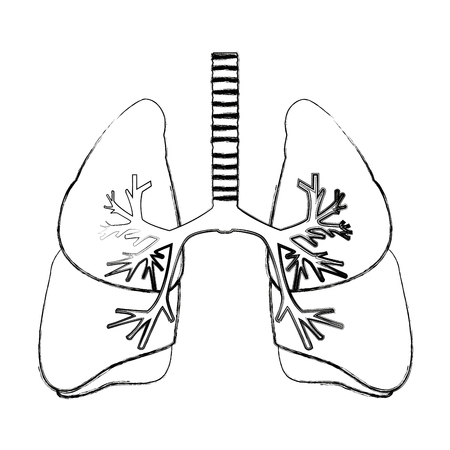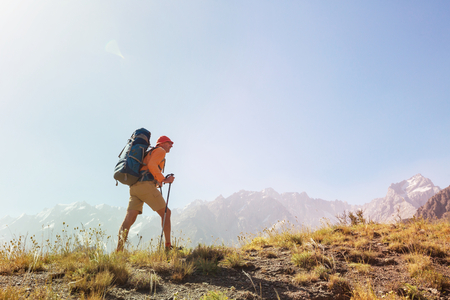1. Understanding the Unique Demands of Extended Backpacking
How Multi-Day Backpacking Differs from Day Hikes
When planning for an extended backpacking trip, it’s important to realize that multi-day adventures are a whole different ballgame compared to your typical day hike. While both get you outside and moving, the demands on your body, energy needs, and even the types of food you should pack can be very different.
Energy Expenditure: More Than Just Miles
On a day hike, you might cover several miles with a light pack and return home for a big meal. On a multi-day trip, you’re carrying everything you need—food, shelter, clothing—which means your backpack is much heavier. This extra weight significantly increases how many calories you burn. Plus, the longer days and repeated effort over multiple days mean your body needs to recover and refuel more efficiently.
| Activity Type | Typical Pack Weight | Estimated Calorie Burn (per hour) |
|---|---|---|
| Day Hike | 5-10 lbs | 300-450 kcal |
| Multi-Day Backpacking | 25-40 lbs | 450-700 kcal |
Environmental Challenges: Weather, Terrain, and Altitude
The environment plays a huge role in how much energy your body needs. Backpacking often takes you through rugged terrain—think steep climbs, rocky paths, or muddy trails. You may also face unpredictable weather like rain, wind, or intense sun. Higher altitudes can further increase calorie requirements because your body works harder to get enough oxygen.
Physical Demands: Recovery and Endurance Matter
Unlike day hikes where you go home to rest, on an extended trip you have to recover “on trail.” Your muscles need time to rebuild overnight, so getting enough protein and nutrients is essential to avoid fatigue or injury. You’ll also need more electrolytes (like sodium and potassium) since you sweat more over long distances and multiple days.
Key Takeaways for Planning Nutrition:
- Your calorie needs will be much higher on extended trips—sometimes double your normal daily intake.
- You’ll need to focus not just on calories but also on getting enough carbs for quick energy, protein for muscle repair, and fats for lasting fuel.
- Packing lightweight but nutrient-dense foods is crucial since every ounce counts in your backpack.
2. Estimating Your Daily Caloric Requirements on the Trail
Why Calorie Needs Increase During Backpacking
When you’re out on a multi-day backpacking trip, your body works much harder than during everyday life. Hiking with a loaded pack, dealing with uneven terrain, and managing weather conditions all add up to burn more calories than you might expect. If you don’t eat enough, you’ll feel sluggish, recover slowly, and could even risk injury or illness.
Main Factors Affecting Calorie Needs
- Body Size: Larger bodies require more calories to function and move.
- Backpack Weight: Carrying extra weight increases energy expenditure.
- Terrain: Climbing steep trails burns more calories than flat walks.
- Climate: Cold weather requires more energy for warmth; hot weather makes you sweat more and can subtly increase needs.
- Hiking Intensity & Duration: Faster paces and longer days mean higher calorie requirements.
Step-by-Step: Calculating Your Trail Calories
- Start with Basal Metabolic Rate (BMR)
This is the number of calories your body needs at rest. For most adults in the U.S., here’s a simple estimate:
Gender BMR Formula (kcal/day) Men 66 + (6.23 x weight in lbs) + (12.7 x height in inches) – (6.8 x age) Women 655 + (4.35 x weight in lbs) + (4.7 x height in inches) – (4.7 x age) - Add Activity Calories
Backpacking typically multiplies your BMR by an activity factor:
Trail Type/Intensity Activity Factor Mild hiking, easy terrain BMR x 2.0-2.5 Difficult terrain, heavy pack, high mileage BMR x 2.5-3.0+ If youre climbing Colorados Fourteeners or tackling sections of the Appalachian Trail with a 40-lb pack, use the higher end of the range.
- Add for Climate & Elevation
Cold? Add 200-500 kcal/day.
High elevation (>8,000 ft)? Add another 200 kcal/day.
Example: Calculating for a Typical American Hiker
- A 30-year-old male hiker, 175 lbs, 5’10”, hiking 10 miles/day with a 30-lb pack on moderate mountain trails in summer.
- BMR = 66 + (6.23 x 175) + (12.7 x 70) – (6.8 x 30) = approx. 1,840 kcal/day
- Total daily needs = BMR x 2.5 (moderate-heavy effort) = 1,840 x 2.5 = 4,600 kcal/day
If it were winter or at high elevation, he’d add another few hundred calories per day.
Quick Reference Table: Estimated Daily Calorie Needs on the Trail
| Description | Total Daily Calories Needed |
|---|---|
| Athletic woman, light pack, easy trail, warm weather | ~2,800 – 3,400 kcal/day |
| Athletic man, moderate pack, hilly terrain, mild weather | ~3,800 – 4,600 kcal/day |
| Larger person/heavy pack/challenging terrain/cold or high altitude | ~5,000+ kcal/day |
Your Takeaway: Listen to Your Body and Adjust!
The numbers above are starting points—everyone’s metabolism is different! Pay attention to hunger levels, energy dips, and how you recover overnight. Don’t be afraid to tweak your intake as you go—especially if you’re hitting classic American long-distance trails like the Pacific Crest Trail or John Muir Trail.

3. Balancing Macronutrients for Sustained Energy
Why Macronutrient Balance Matters on the Trail
When you’re spending long days hiking in the backcountry, what you eat directly impacts your stamina, focus, and how quickly your muscles recover. Unlike a regular day at home, backpacking ramps up calorie burn and increases your need for all three macronutrients: carbohydrates, protein, and fats. Each macronutrient plays a unique role in keeping you fueled and feeling good on the trail.
Recommended Macronutrient Ratios for Backpackers
For extended trips, most American backpackers follow these general macronutrient guidelines to cover endurance, muscle repair, and lasting fullness:
| Macronutrient | % of Total Calories | Main Role | Trail Food Examples |
|---|---|---|---|
| Carbohydrates | 50–60% | Quick energy for hiking, refueling glycogen stores | Instant oatmeal, tortillas, dried fruit, granola bars |
| Protein | 15–20% | Muscle repair, immune support, satiety | Jerky, tuna packets, nut butters, dehydrated beans |
| Fats | 25–35% | Long-term energy, helps you feel full longer | Cheese, olive oil packets, nuts and seeds, salami |
How Popular Backpackers Build Their Meals
A lot of American thru-hikers and long-distance backpackers plan meals around these ratios while prioritizing foods that are lightweight and calorie-dense. Here’s how a typical day might look:
- Breakfast: Oatmeal with dried fruit and a scoop of peanut butter (carbs + fat + protein)
- Lunch: Tortilla with tuna packet and cheese (carbs + protein + fat)
- Snacks: Trail mix (nuts, chocolate chips, dried fruit), energy bars (mixed macros)
- Dinner: Instant mashed potatoes with dehydrated chili or beans (carbs + protein) plus olive oil drizzle (extra fat)
Tweaking Your Ratios Based on Activity Level
If you’re logging big miles with lots of elevation gain or colder weather is in the forecast, bumping up your carbs and fats can help meet higher energy demands. For recovery days or shorter mileage, more protein may be helpful to support muscle repair. Most hikers experiment over time to find their personal sweet spot.
4. Micronutrients and Hydration Essentials
Key Vitamins and Minerals for the American Backcountry
When youre out on a multi-day backpacking trip in the United States, your body needs more than just calories. Essential micronutrients help keep your energy up, support muscle function, and boost your immune system—crucial for staying strong in ever-changing conditions from the Rockies to the Appalachian Trail. Heres a quick guide to important vitamins and minerals and why you shouldnt overlook them:
| Micronutrient | Main Benefits | Backpacking Food Sources |
|---|---|---|
| Sodium & Potassium (Electrolytes) | Prevent muscle cramps, maintain fluid balance, support nerve function | Trail mix with salted nuts, electrolyte drink mixes, dried fruit, jerky |
| Calcium & Magnesium | Support bone health, muscle contraction, reduce risk of cramps | Powdered milk, cheese snacks, leafy greens (dehydrated), nut butter packets |
| Iron | Help carry oxygen in your blood, prevent fatigue | Tuna packets, beef jerky, lentil soups (dehydrated), oatmeal with seeds |
| Vitamin C | Boost immune system, help iron absorption | Dried berries, citrus drink powders, bell peppers (dehydrated) |
| B Vitamins | Support metabolism and energy production | Whole grain crackers, granola bars, trail mixes with seeds/nuts |
| Vitamin D | Aid calcium absorption, bone strength (especially if hiking in shaded forests) | Canned fish (salmon/tuna), fortified instant oatmeal or milk powder |
Electrolyte Balance: Your Secret Weapon Against Cramps and Fatigue
American backcountry conditions can be tough—hot desert trails in Utah or humid hikes in the Smokies mean you sweat out vital electrolytes fast. When planning meals and snacks:
- Add salty snacks: Pretzels or salted nuts help replace sodium lost through sweat.
- Packed drink mixes: Choose electrolyte tabs or powdered sports drinks tailored for endurance activities.
- Dried fruits: Apricots and bananas are loaded with potassium.
- Don’t rely on water alone: Over-hydrating without electrolytes can actually lead to hyponatremia (dangerously low sodium).
Smart Hydration Strategies for US Trails
The US backcountry is famous for its wide range of climates. Dehydration is common and can sneak up on you whether you’re high in the Sierras or deep in canyon country. Here’s how to stay ahead of it:
How Much Water Do You Need?
- Aim for 0.5–1 liter per hour of hiking: Adjust based on heat, humidity, altitude, and pack weight.
- If it’s hot or at altitude: Increase intake—but always balance with electrolytes.
- Monitor urine color: Pale yellow means good hydration; dark yellow means you need more fluids.
Treat All Backcountry Water Sources!
- Purify water: Use filters, chemical tablets, or UV pens—even clear mountain streams can harbor pathogens.
- Caching water: On dry sections like the Pacific Crest Trail’s desert stretches, stash water ahead of time or plan stops at reliable sources listed in local guidebooks.
- Add flavor: Flavored electrolyte powders make it easier to drink enough throughout the day.
Quick Reference: Hydration & Electrolyte Checklist for Backpackers
| Tip/Strategy | Description/Examples |
|---|---|
| Pace your drinking | Sip small amounts regularly rather than chugging large amounts infrequently. |
| Add electrolytes daily | Pill packets or flavored powders (check for sodium/potassium content) |
| Carry backup purification method | Iodine tabs or mini filter as a backup to your main system. |
| Munch on salty snacks during big climbs/hot days | Pretzels, salted nut butter packets, jerky sticks. |
If you keep these micronutrient and hydration tips top of mind while planning your food and drink supplies—and adapt to your own sweat rate and trip conditions—you’ll have a much better shot at staying healthy and energized on even the longest American backcountry adventures!
5. Practical Meal Planning and Trail Food Tips
Choosing the Right Trail Foods
When planning meals for an extended backpacking trip, you want foods that are lightweight, calorie-dense, and easy to prepare. American hikers often rely on a mix of store-bought favorites and homemade options to keep their packs light but their energy high.
Popular Lightweight Trail Food Brands
| Brand | Product Type | Why Its Great for Backpacking |
|---|---|---|
| Mountain House | Freeze-dried meals | Quick prep, long shelf life, lots of calories per serving |
| Clif Bar | Energy bars | Easy snack, packs well, balanced carbs & protein |
| Kodiak Cakes | Pancake/waffle mix packets | High protein, just add water, great for breakfast |
| Tuna Creations (Starkist) | Tuna pouches | No need to drain, lean protein boost, variety of flavors |
| Justin’s Nut Butter | Single-serve nut butter packets | Healthy fats, compact calories, spreads easily on crackers or tortillas |
DIY Strategies for Trail Nutrition
- Dehydrate Your Own Meals: Invest in a food dehydrator and make your own chili, pasta sauce, or fruit snacks. This saves money and lets you control ingredients.
- Create Your Own Snack Mixes: Mix nuts, dried fruit, dark chocolate chips, and pretzels for calorie-dense trail mixes tailored to your taste.
- Mason Jar Overnight Oats: Pre-mix oats with powdered milk and dried fruit in zip-top bags for easy breakfast—just add water!
- Baggie Cooking: Portion out spices and instant grains like couscous or ramen into bags. Add hot water right into the bag for a no-cleanup meal.
- Vacuum Seal Meals: Use a vacuum sealer to pack portioned meals; this reduces bulk and extends shelf life.
Packing Smart: Pro Tips from the Trail
- Pack by Day: Organize your food by day in separate bags so you don’t have to dig through your whole food bag at every meal.
- Avoid Bulky Packaging: Repackage everything into zip-top freezer bags. It saves space and reduces trash.
- Add Flavors: Pack small containers of olive oil, hot sauce packets, or seasoning blends to make basic meals tastier and add healthy fats.
- Diversify Your Snacks: Bring a mix of sweet and savory snacks so you don’t get “flavor fatigue.” Jerky, cheese sticks (like Babybel or string cheese), gummies, and crackers are all great choices.
- Coffee & Tea Lovers: Single-serve instant coffee packets (like Starbucks VIA) or tea bags are ultralight and provide a much-needed morale boost on chilly mornings.
- Sneak in Extra Calories: Sprinkle powdered coconut milk or add olive oil to meals for extra energy without extra bulk.
- Cater to Dietary Needs: If you’re gluten-free or vegan, there are plenty of American brands making allergy-friendly trail foods—look for labels like “Gluten-Free” or “Plant-Based” at outdoor stores.
Nutrient-Rich Sample Day Menu (Approx. 3,500 kcal)
| Meal Time | Menu Example |
|---|---|
| Breakfast | Kodiak Cakes pancakes with Justin’s almond butter & dried blueberries (add hot water) |
| Morning Snack | Clif Bar + handful of trail mix (nuts/dried fruit/chocolate chips) |
| Lunch | Tortilla wraps with Starkist Tuna Creations pouch & cheese stick + crackers |
| Afternoon Snack | Pepperoni slices + Babybel cheese + apple chips (dried apples) |
| Dinner | Mountain House Chili Mac with olive oil drizzle + instant mashed potatoes packet mixed in for extra carbs/calories |
Final Packing Checklist Before Hitting the Trail:
- Total daily calories calculated based on activity level (aim for 3,000–5,000 kcal/day depending on terrain & weather)
- A balance of carbs (energy), protein (muscle repair), and fats (long-lasting fuel)
- A variety of flavors and textures to keep eating enjoyable—even when youre tired!
- A plan for safe food storage (bear canister/bag if hiking in bear country)


